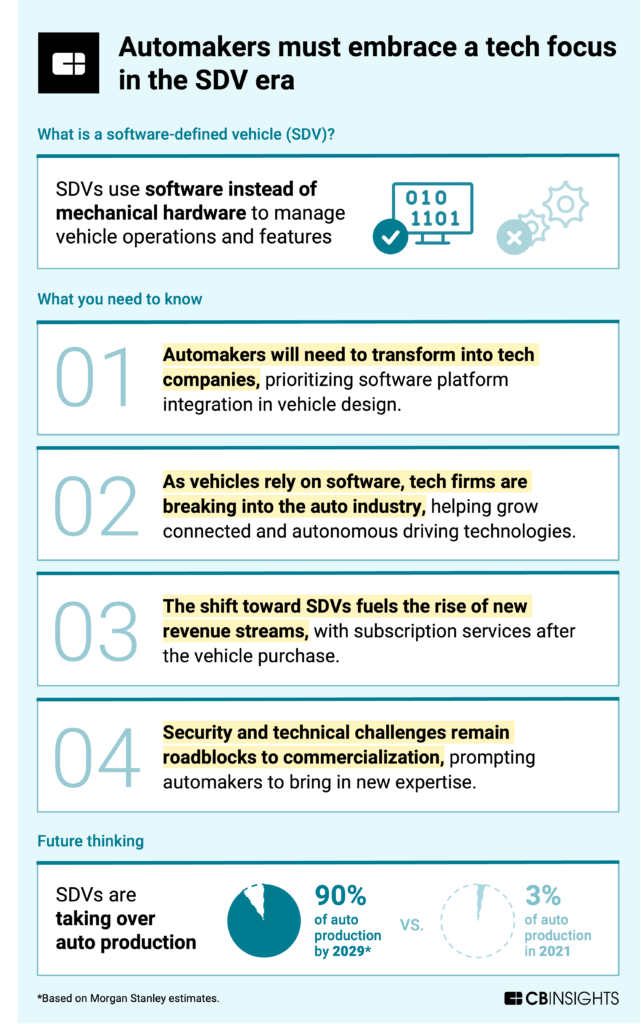In the era of software-defined vehicles (SDVs), mastering software development and cybersecurity will be as important as mechanical engineering for traditional automakers. We break down key innovations, new business models, and challenges ahead in the SDV landscape.
The shift to software-defined vehicles (SDVs) — which use software instead of mechanical hardware to manage vehicle operations and features — marks a significant evolution in the automotive industry, driven by consumer demand for more connected and personalized vehicles, as well as advances in autonomous driving capabilities.
By 2029, SDVs could account for as much as 90% of auto production, up from just 3% in 2021, per Morgan Stanley. However, the transition comes with steep challenges, such as the technical complexity involved and the need for strong cybersecurity measures to protect connected vehicles.
Here’s what the shift means for the auto industry as a whole:
- Automakers will need to transform into tech companies, prioritizing software platform integration and connectivity as central elements of vehicle design — not afterthoughts.
- As vehicles rely more on software, tech firms are breaking into the auto industry, helping advance connected, AI-driven applications and autonomous driving technologies. These players are positioning themselves as complementary tech partners for automakers looking to expand their software presence.
- The shift toward SDVs fuels the rise of new revenue streams, such as shared mobility, subscription-based features, and over-the-air updates that push the latest features and security enhancements.
- Security and technical challenges are roadblocks to commercialization, prompting automakers to bring new expertise in-house, partner externally on software initiatives, and adopt robust cybersecurity measures.
Below, we explore how leading automakers are pursuing software-defined vehicles, the new business models these vehicles enable, and the challenges that lie ahead.
Automakers will need to transform into tech companies
The transition to software-defined vehicles signifies a major shift in traditional automotive priorities, moving from hardware dominance to software-driven architectures.
Want to see more research? Join a demo of the CB Insights platform.
If you’re already a customer, log in here.


